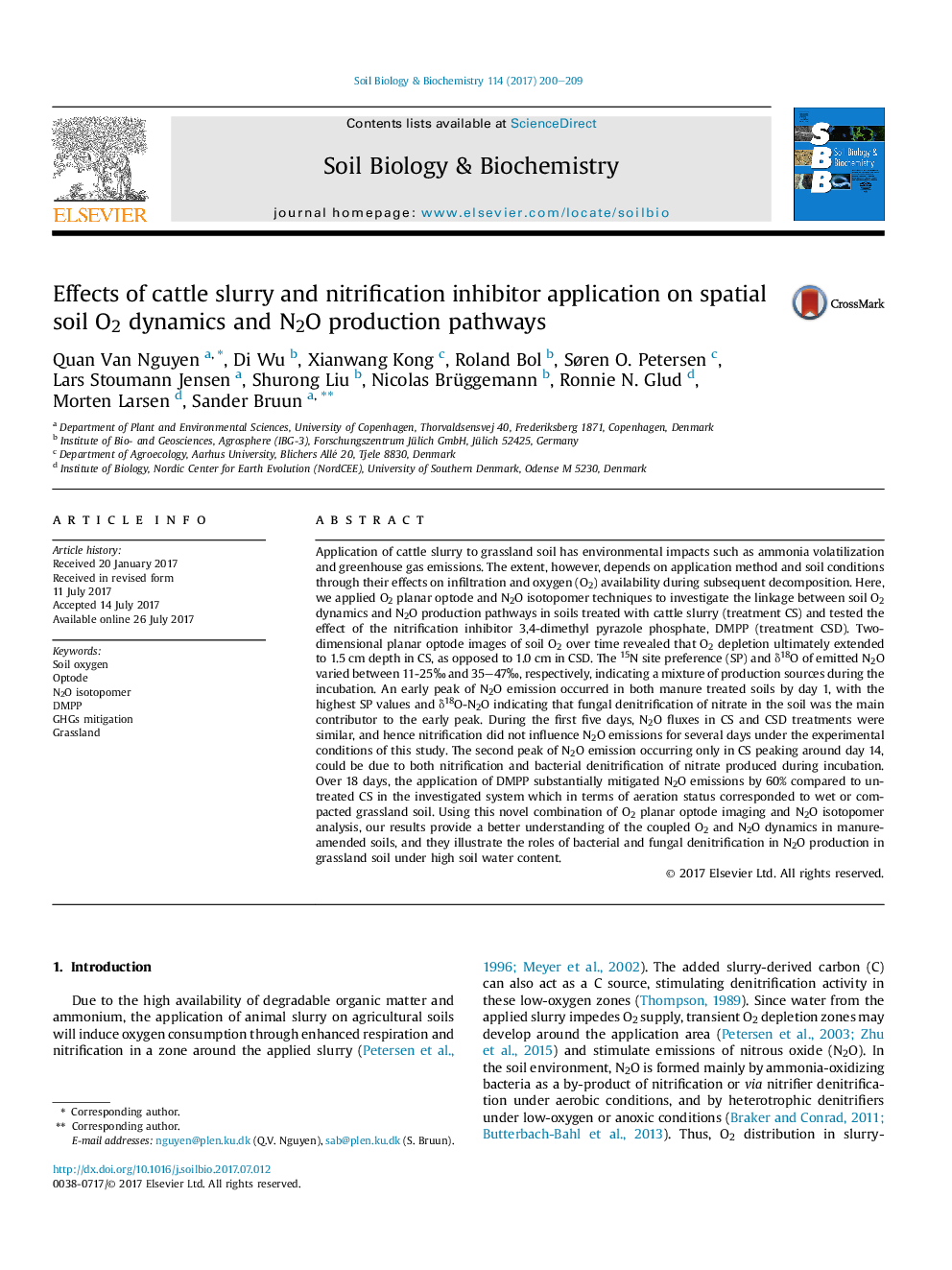| کد مقاله | کد نشریه | سال انتشار | مقاله انگلیسی | نسخه تمام متن |
|---|---|---|---|---|
| 5516320 | 1542570 | 2017 | 10 صفحه PDF | دانلود رایگان |

- A novel combination of O2 optode and N2O isotopomer techniques was used to investigate effects of soil O2 on N2O production.
- Soil O2 depletion was less severe for cattle slurry treated with DMPP compared the untreated slurry.
- N2O emission was not affected by DMPP in the first 5 days, but was reduced by 60% over 18 days.
- Bacterial and fungal denitrification were suggested as the main N2O production pathways in the soil at 85% WFPS.
Application of cattle slurry to grassland soil has environmental impacts such as ammonia volatilization and greenhouse gas emissions. The extent, however, depends on application method and soil conditions through their effects on infiltration and oxygen (O2) availability during subsequent decomposition. Here, we applied O2 planar optode and N2O isotopomer techniques to investigate the linkage between soil O2 dynamics and N2O production pathways in soils treated with cattle slurry (treatment CS) and tested the effect of the nitrification inhibitor 3,4-dimethyl pyrazole phosphate, DMPP (treatment CSD). Two-dimensional planar optode images of soil O2 over time revealed that O2 depletion ultimately extended to 1.5 cm depth in CS, as opposed to 1.0 cm in CSD. The 15N site preference (SP) and δ18O of emitted N2O varied between 11-25â° and 35-47â°, respectively, indicating a mixture of production sources during the incubation. An early peak of N2O emission occurred in both manure treated soils by day 1, with the highest SP values and δ18O-N2O indicating that fungal denitrification of nitrate in the soil was the main contributor to the early peak. During the first five days, N2O fluxes in CS and CSD treatments were similar, and hence nitrification did not influence N2O emissions for several days under the experimental conditions of this study. The second peak of N2O emission occurring only in CS peaking around day 14, could be due to both nitrification and bacterial denitrification of nitrate produced during incubation. Over 18 days, the application of DMPP substantially mitigated N2O emissions by 60% compared to untreated CS in the investigated system which in terms of aeration status corresponded to wet or compacted grassland soil. Using this novel combination of O2 planar optode imaging and N2O isotopomer analysis, our results provide a better understanding of the coupled O2 and N2O dynamics in manure-amended soils, and they illustrate the roles of bacterial and fungal denitrification in N2O production in grassland soil under high soil water content.
595
Journal: Soil Biology and Biochemistry - Volume 114, November 2017, Pages 200-209